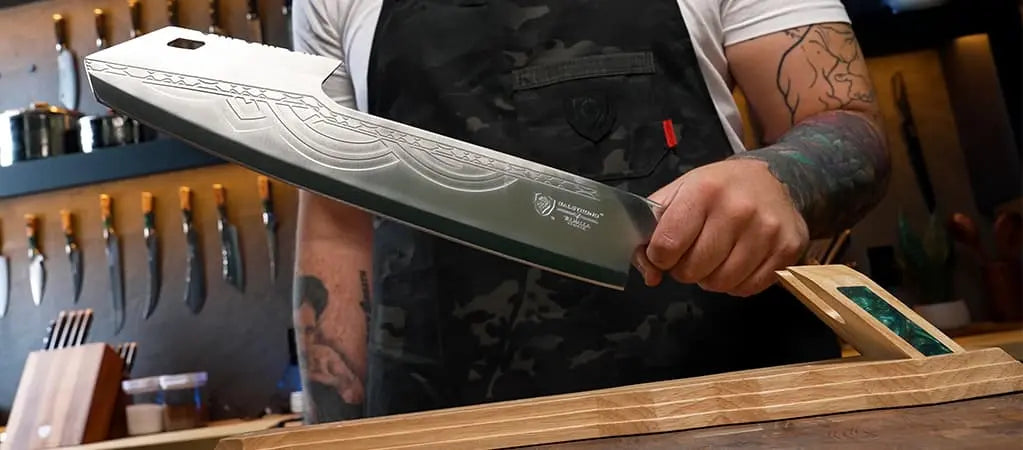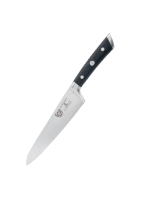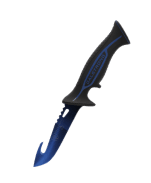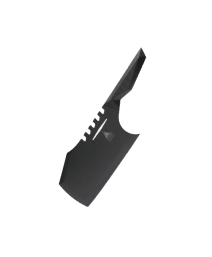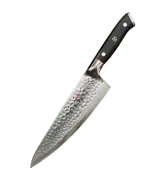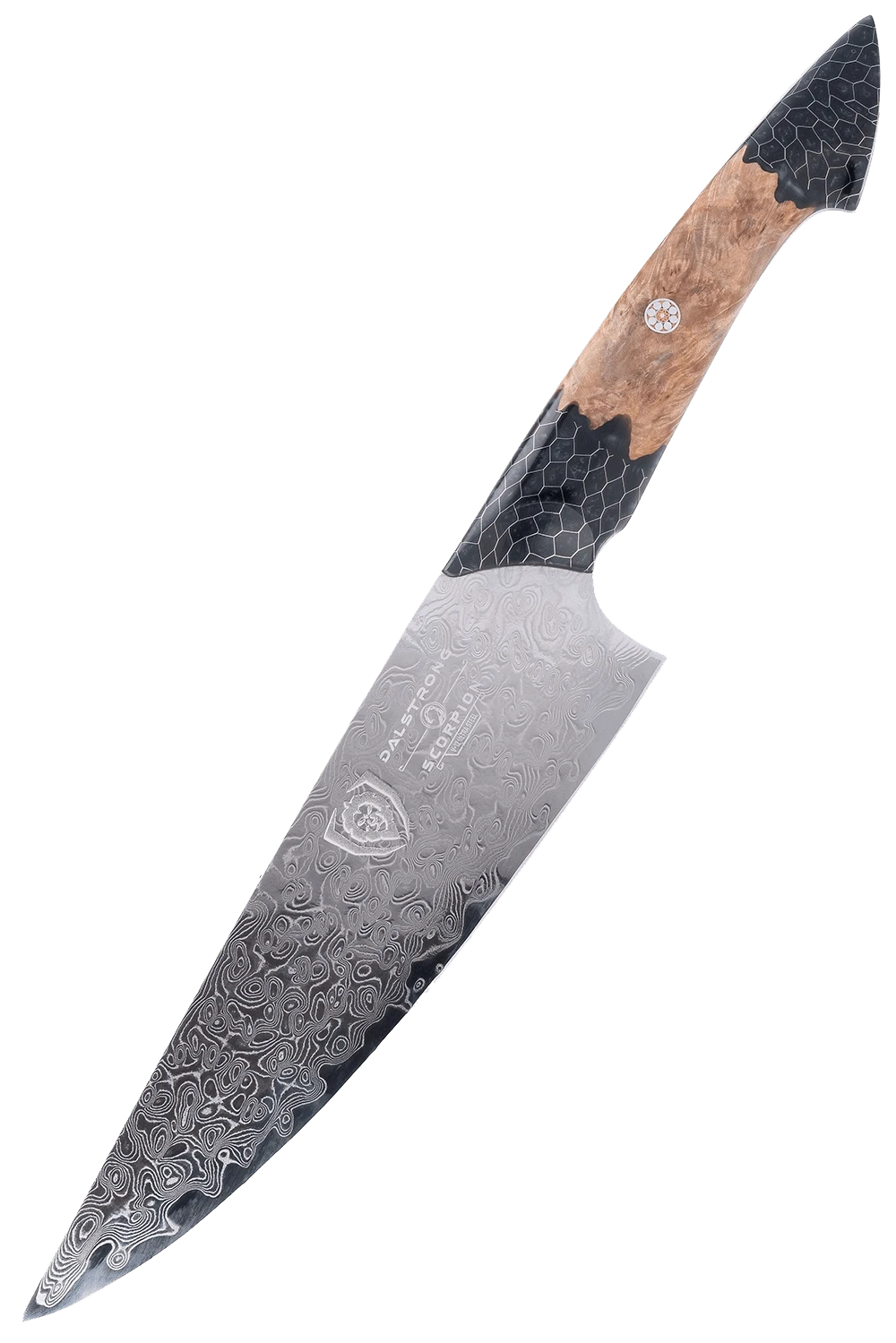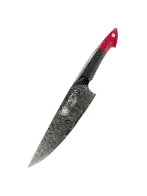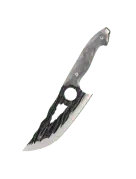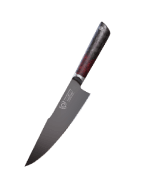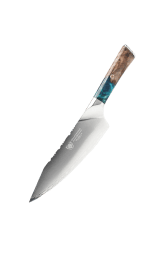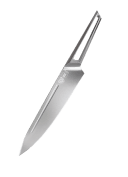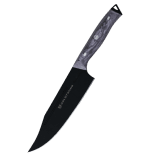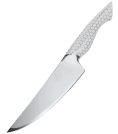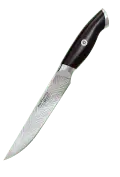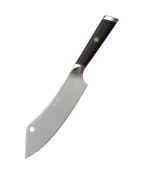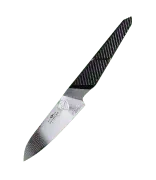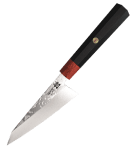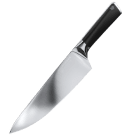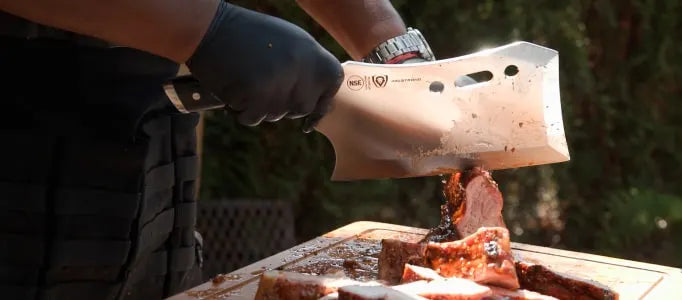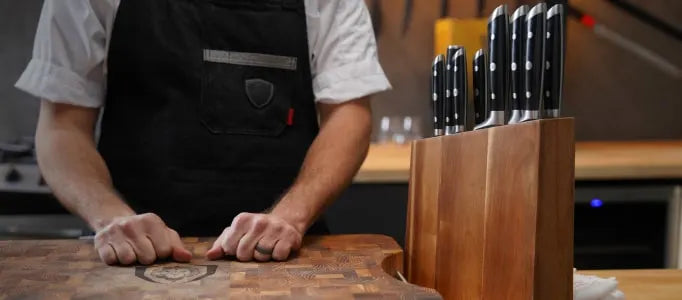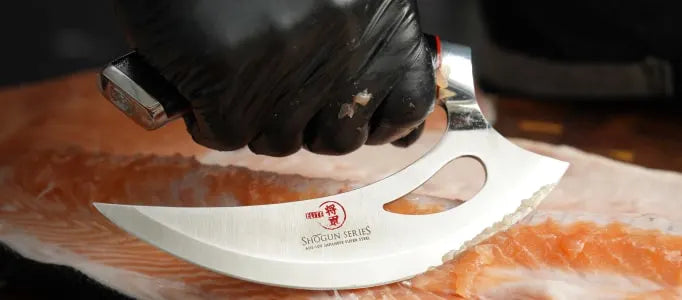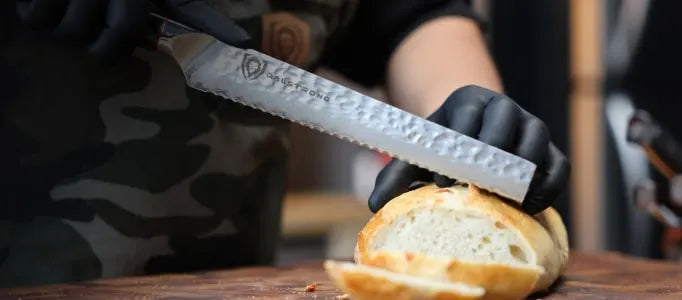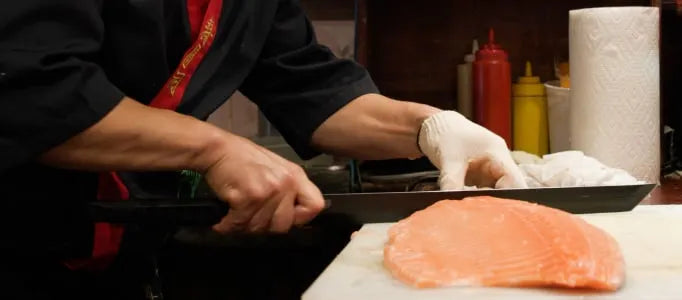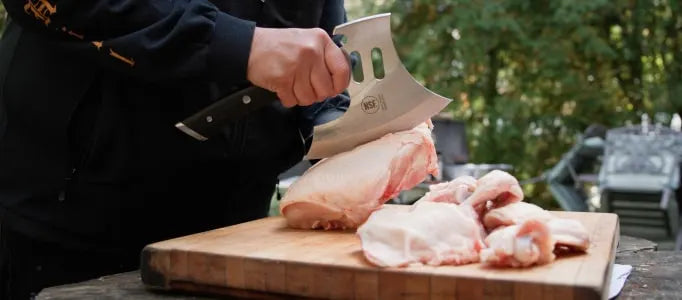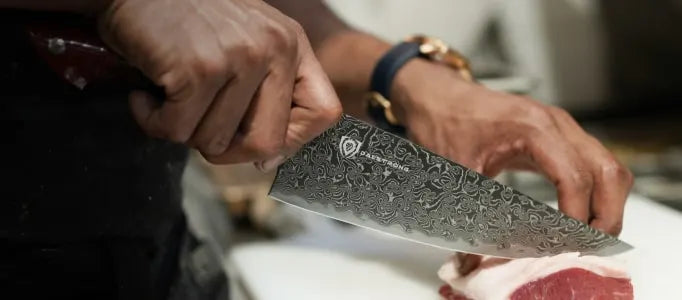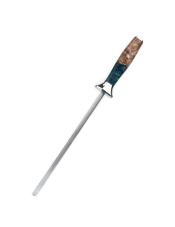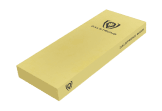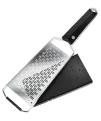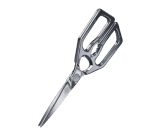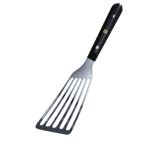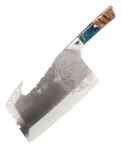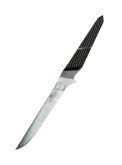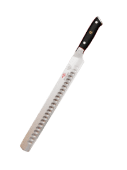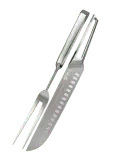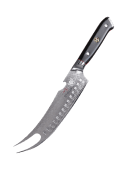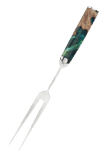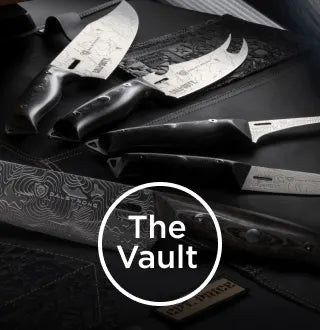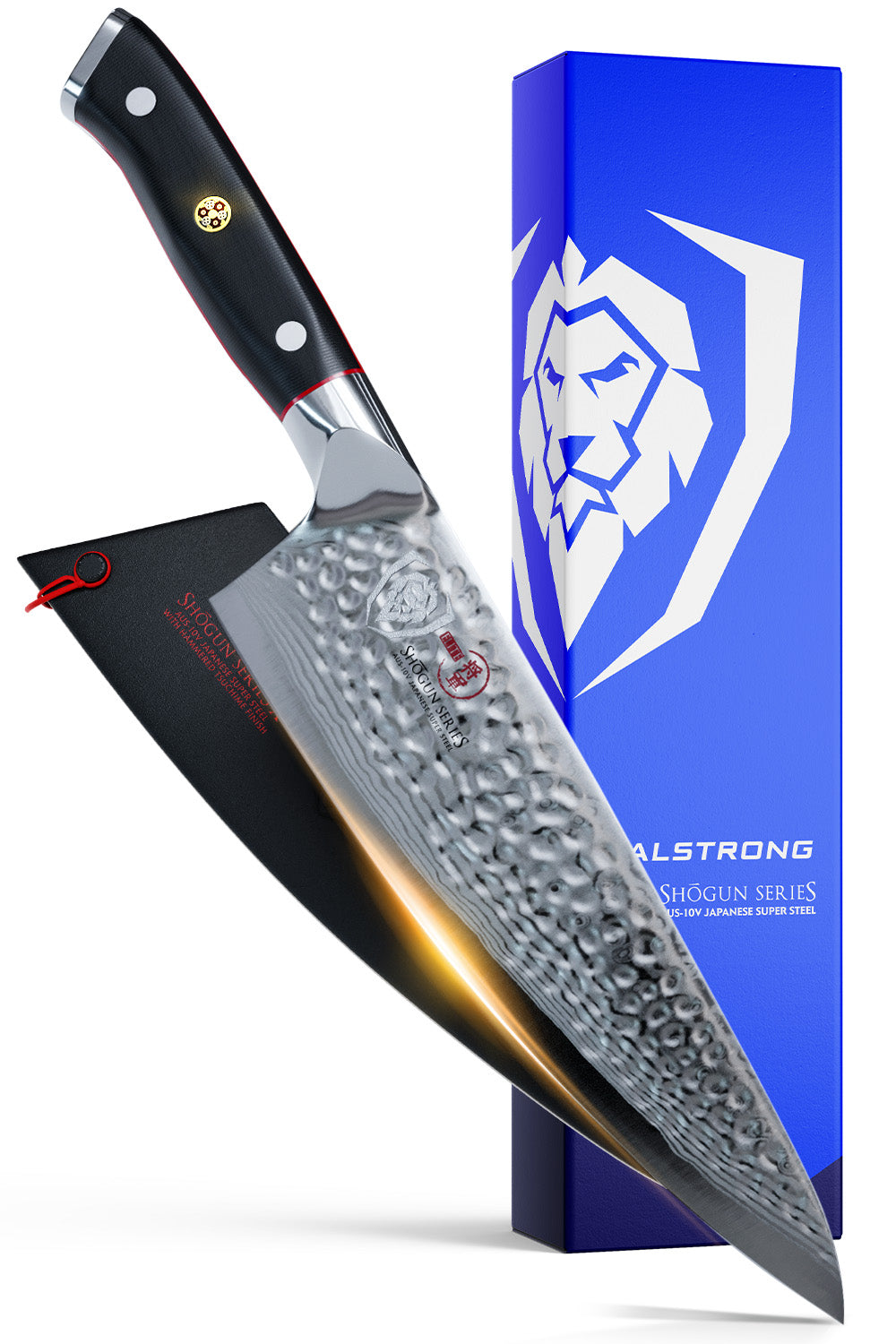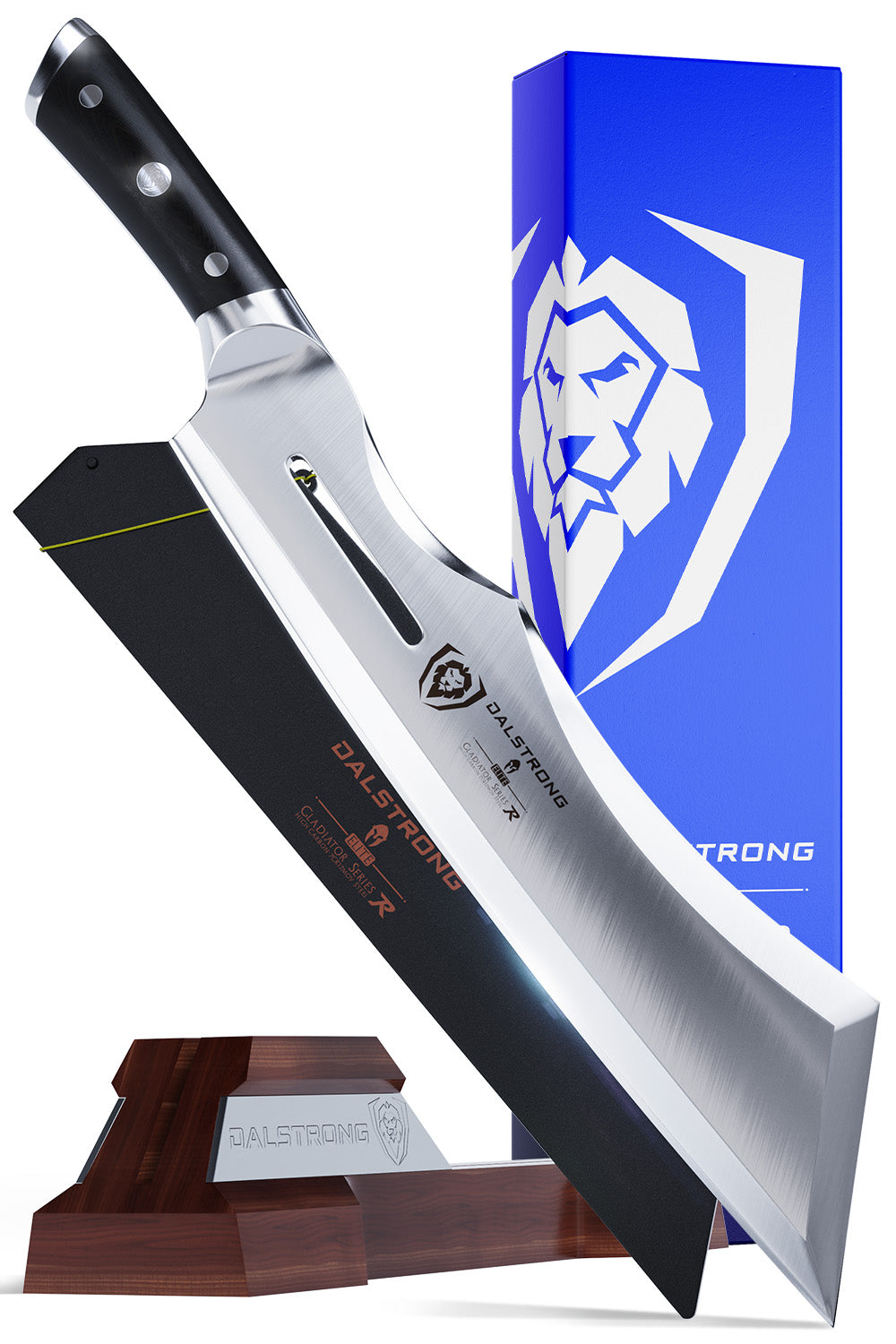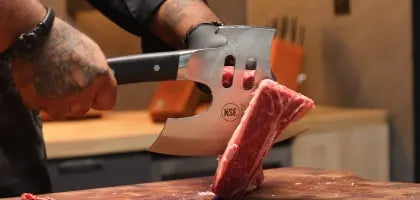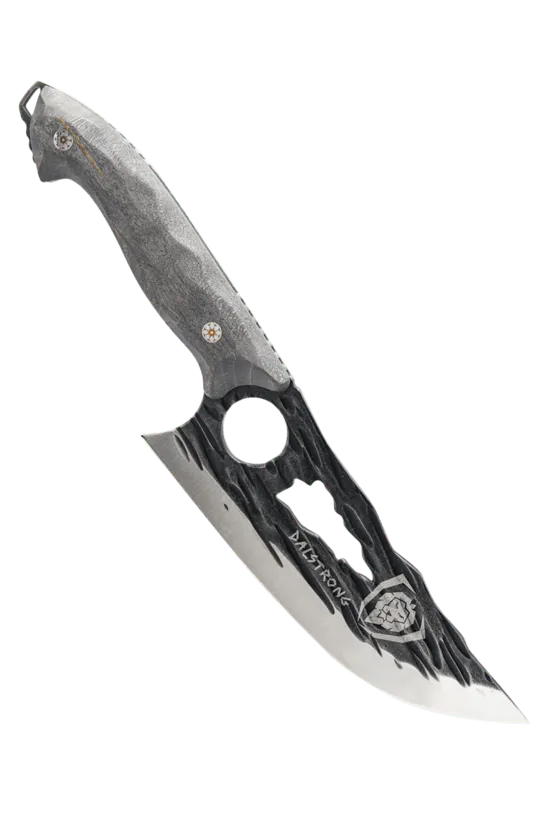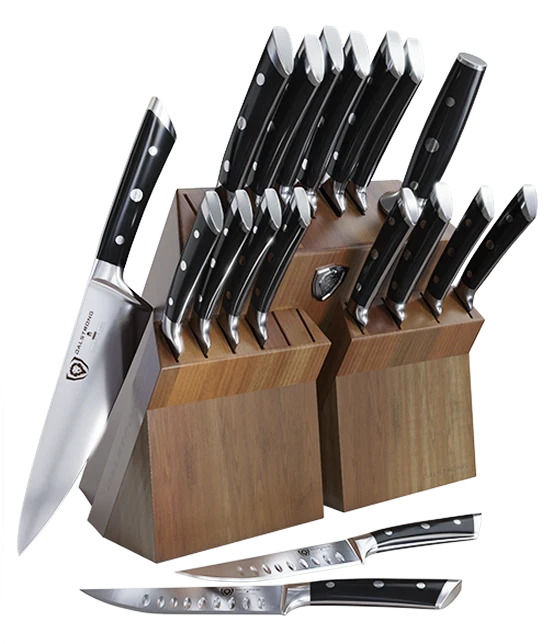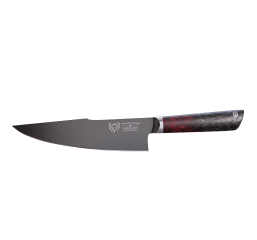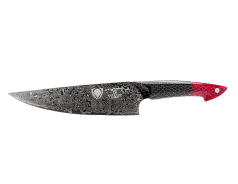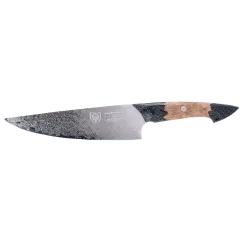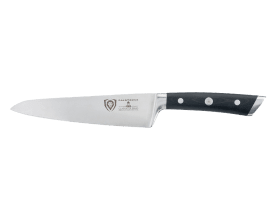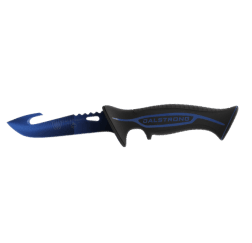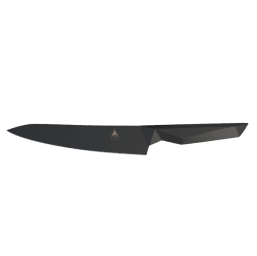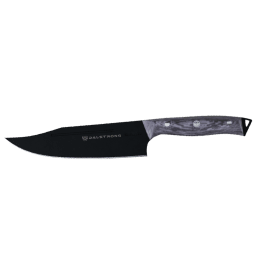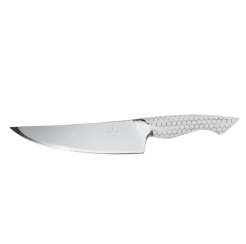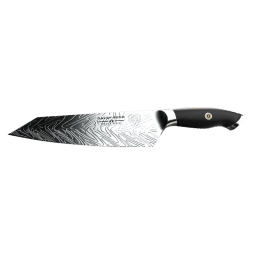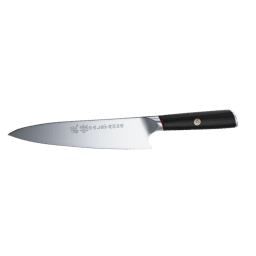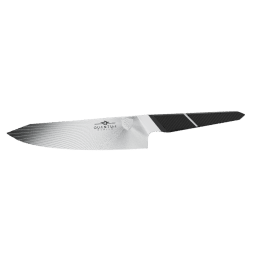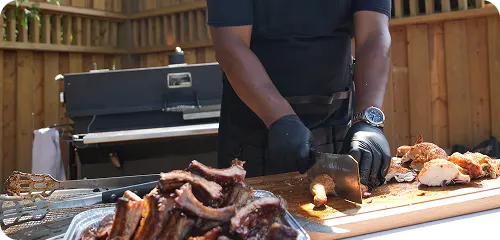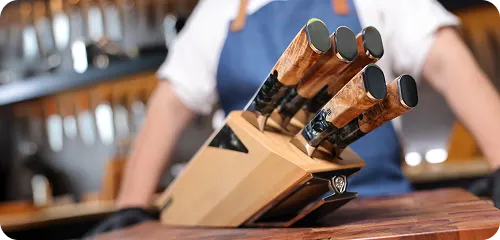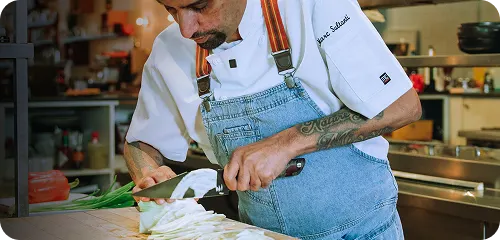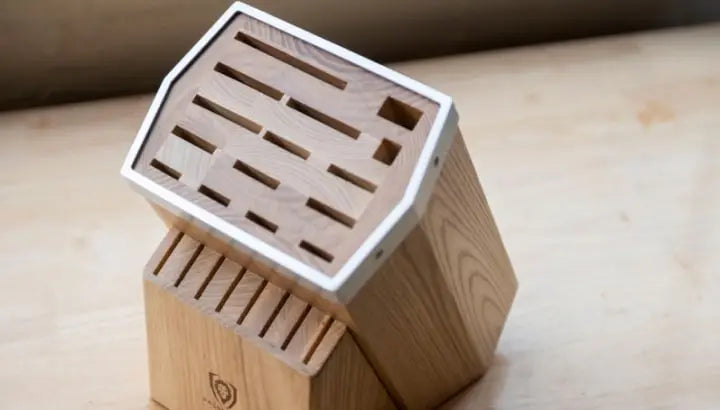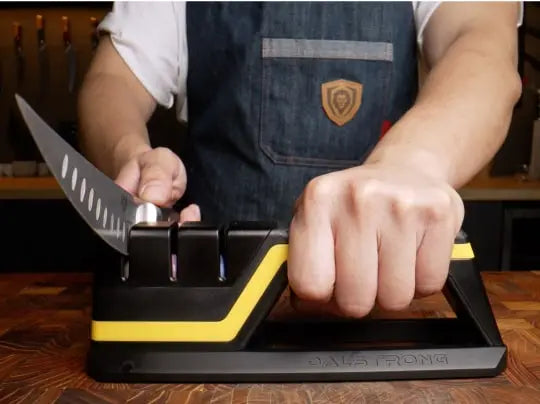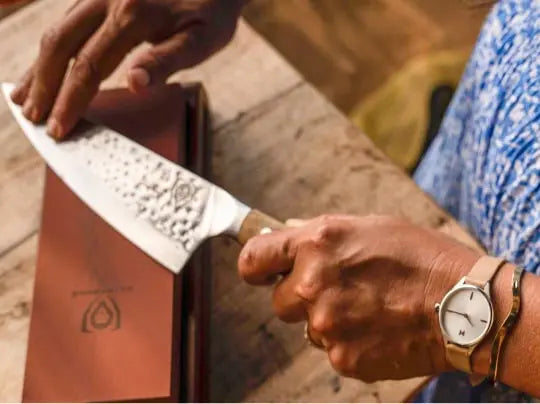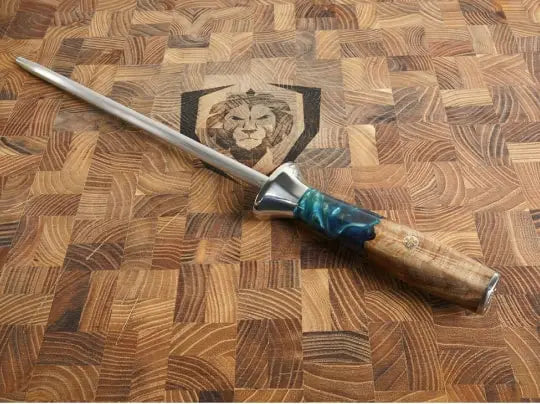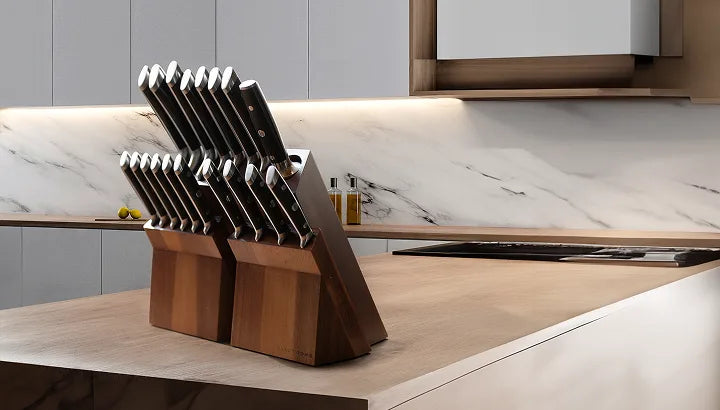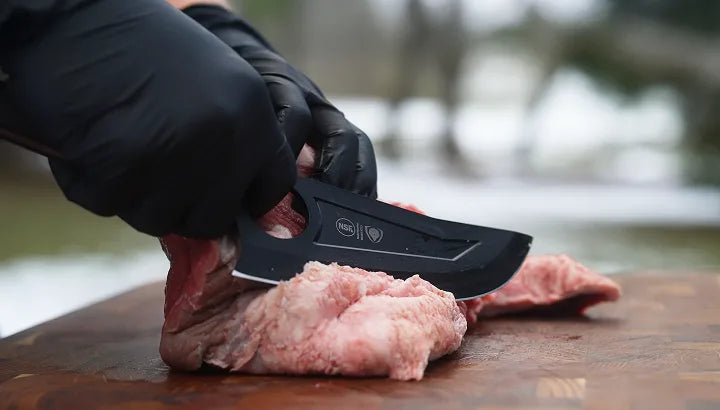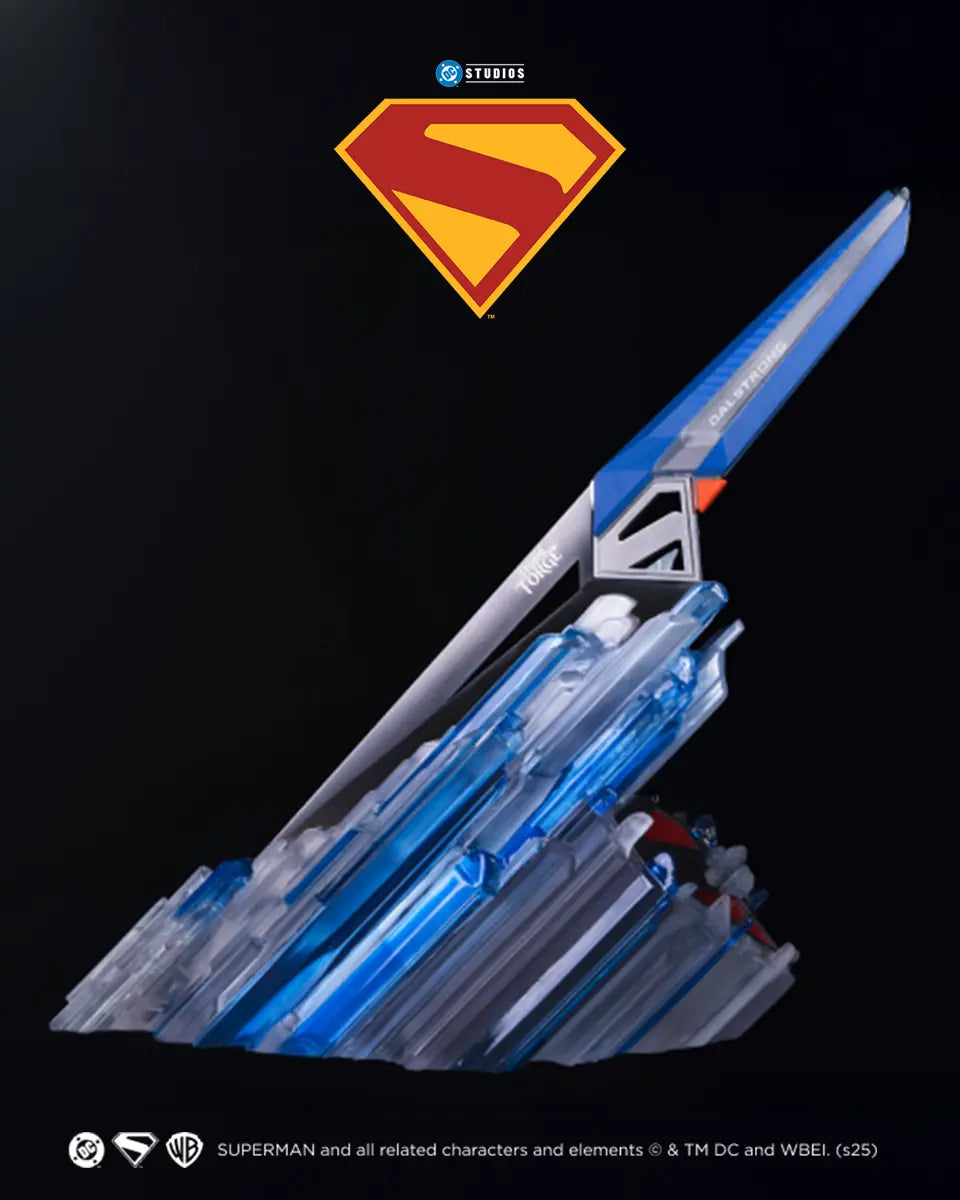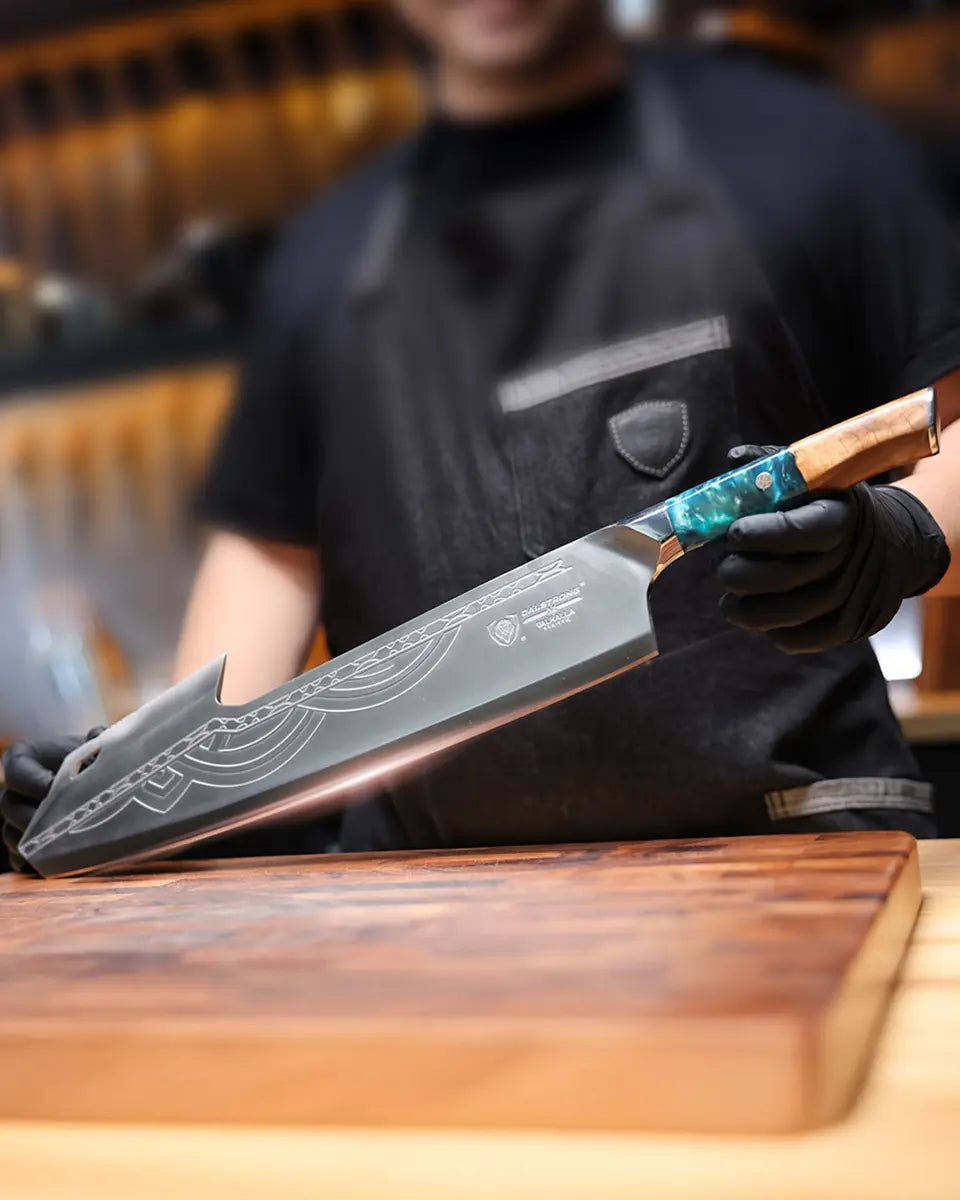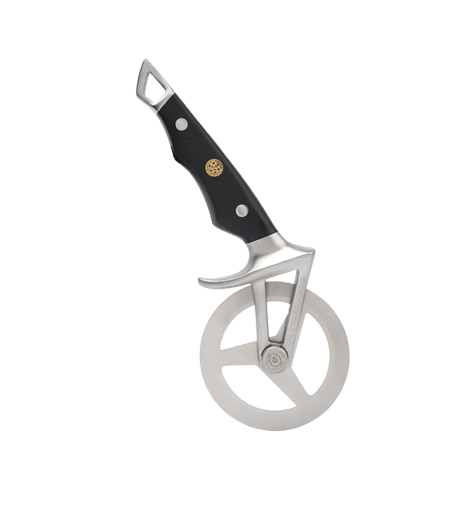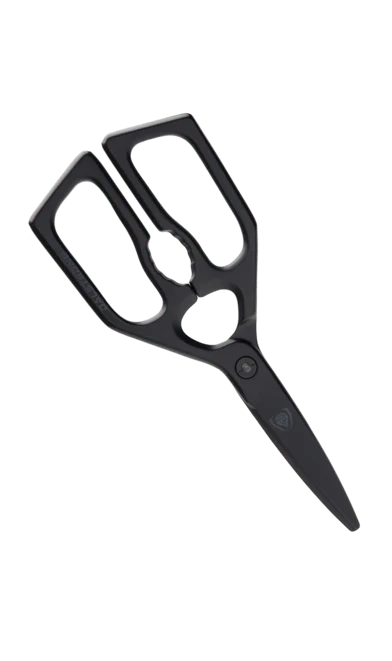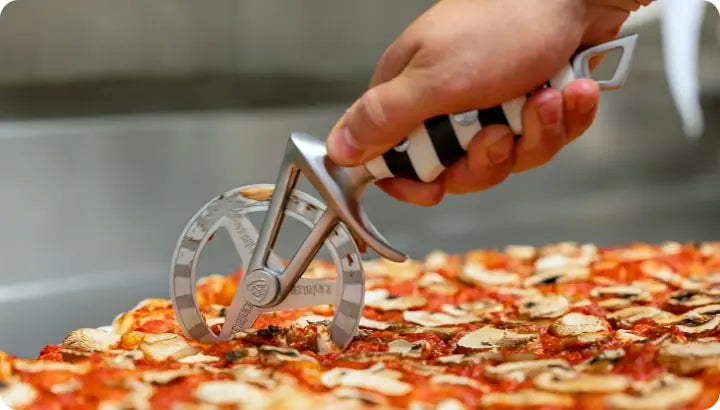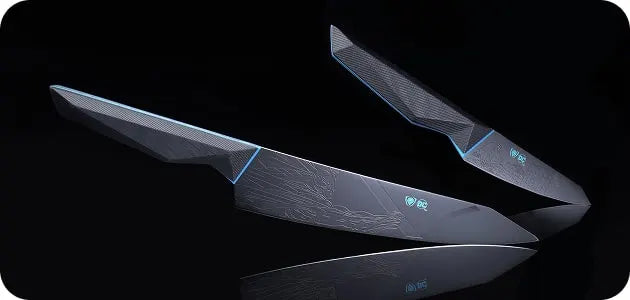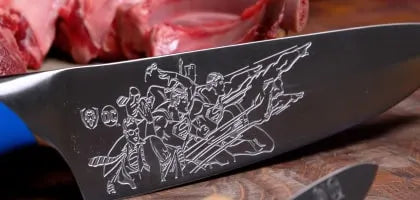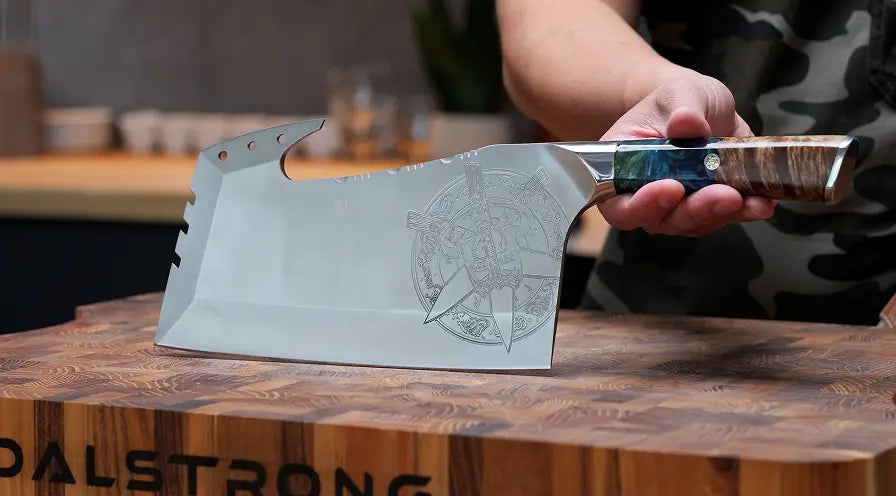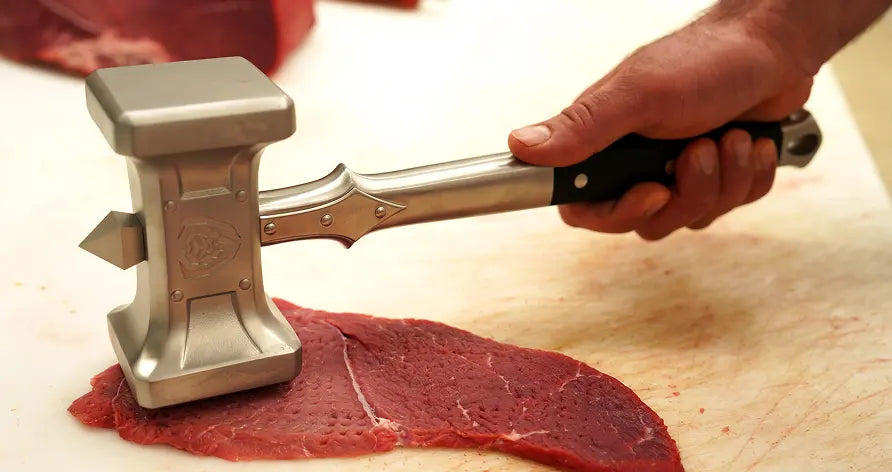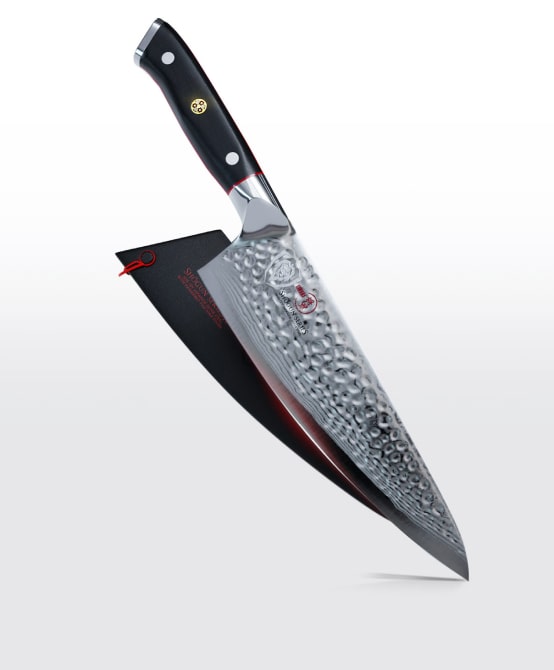 Ulu Rocking Knife 7” | Gladiator Series
Ulu Rocking Knife 7” | Gladiator Series
You know we love knives. But let’s talk –not only about a cooking tool– but about a historical and extraordinary knife embedded in Intuit culture and highly used in the modern kitchen.
We have no doubts that your kitchen may have a wide array of tools and equipment, from cookware to accessories like a proper cutting board and aprons. But, if you are looking to upgrade your kitchen knife set and equip your kitchen with the best of the best, an ancestral ulu knife is definitely worth your investment.
Derived from the Eskimo-Aleut term “ooloo”, the ulu knife was a device used by indigenous Alaskan tribes for thousands of years. Originally, it was named uuluurag, which meant a woman's knife. It has been traditionally used to clean the skins of different types of meat to make clothing and cut meat for different preparations.
In historical times, their blade was made up of everything from shale, slate, or quartzite with handles that could be made of wood, ivory, caribou antler, or even bone. Nowadays it contains a fine steel blade and its handle can be made of different ergonomic materials to best support culinary activities. Without a doubt, the ulu knife is still used in prestigious kitchens around the world. Let’s learn a little bit more about this transcendental culinary tool.

1. What Is A Ulu Knife?
An ulu knife is a curved knife of Eskimo origin. Several kitchen knives can be used to work with meats, such as a chef’s knife, a slicing knife, a butcher knife, or a cleaver knife. These are traditional knives but an ulu knife has a curved and thin crescent-shaped blade perfectly made to get the best results when cutting meats, vegetables, and many other ingredients.
2. Ulu Knife History
The Alaskan ulu knife has a history of more than 5,000 years. Starting with the Yupik, Aleut, and Inuit cultures in Alaska, Greenland, and Canada. It was created to be a knife for all purposes of typical day-to-day tasks of their communities. Originally, it was mostly used by women to skin animals and clean their meat before cooking, trim big chunks of ice, cut different foods, cut their kid's hair, and even as a weapon.
Within time the ulu knife has crept into the mainstream market and it’s used in many kitchens around the world, nevertheless, its important role in Inuit culture remains just as important as it was when its invention, thousands of years ago.
One of its incredible perks is that the Alaskan ulu knife is disability-friendly. If a cook has any condition such as arthritis, nerve, wrist pain, carpal tunnel, or even partial loss of a limb, the ulu knife will provide the possibility of achieving kitchen tasks easily.
Historically, ulu knives were not only a tool but were used to be presented as gifts, because of their cultural symbolism. For example, if a member of their community accomplished a significant goal in education. Nowadays, the Artics Winter Games present gold, silver, and bronze uluit to athletes instead of medals.
The ulu knife comes in different sizes, styles, and shapes:
- The size reflects its usage. An ulu knife with a 2 inches blade would be used for cutting patterns from animal skins (traditionally would also be used as part of a sewing kit). An ulu knife with a 6 inches blade or a 12 inches blade would be used for different purposes.
- The styles reflect the way it’s designed. In the Alaskan style (also called Inupiat) the blade has a centerpiece cut out and both ends of the edge fit the handle. In the Canadian style, the blade is attached to the handle by a single stem in the center. In the West Greenlandic style, the blade has a triangular shape. And in the East Greenlandic style, the ends of the blade tend to be pointed.
- The shape of the ulu knife ensures where the force of the blade is centered. This makes the ulu easier to use when cutting hard ingredients that contain hard objects such as bone. Because the rocking motion used when using an ulu knife pins down the food against the cutting board, which makes it easier to handle (unlike, when cutting meat we must support the cut by using a fork, for example).
3. How To Use A Ulu Knife
The ulu knife is used very simply. It has a strong handle that allows it to be implemented with one hand to facilitate the work for many cooks and to satisfy those who prefer to use only one hand to make cuts without much effort.
Even if you are not an experienced cook, the Alaskan ulu knife is an incredibly versatile tool for you to get immersed in the culinary world. It can glide across ingredients and surfaces with ease and its curved blade stays sharp and intact for a long time without requiring ongoing maintenance.
Although it was formerly used to clean animal skins and even to cut hair, today the best chefs use it to mince and dice vegetables like celery and onions, to cut meats like briskets, or fish and chicken, to cut big chunks of cheese and slice big plates of pizza, and to chop nuts like an expert would do!
4. What To Look For In A Ulu Knife
Unlike a traditional knife, an Alaskan ulu knife is a slicing machine. It’s the perfect substitute for many other knives we look to have in our kitchen. Made from hardened tempered high carbon stainless steel, carefully designed with a beveled edge, and with an ergonomic push handle that will allow you to cut, mince and slice any ingredient with ease and precision.
When you’re looking for this favorite kitchen tool, it is important to take into account some characteristics that can guarantee the durability of this extraordinary tool. Here are some of the things to keep in mind when looking for an ulu knife from your preferred manufacturer:
- A walnut handle or wood handle that is unusually hard and durable (the color may vary, and keep in mind that some manufacturers make their handlers out of caribou antler)
- Hardened and tempered high-carbon stainless steel blade
- Beveled edge blade
- Brass rivets
- Variety of sizes
- Leather sheath to store it in
- National Sanitation Foundation (NSF) Certified
- Lifetime warranty
The fine blade will maintain its shape for a long time without needing to constantly sharpen it. The handle adds comfort, style, and function. Easy to clean and easy to store. After some time it’s highly recommended to sharpen your ulu knife. That is exactly what we’re going to talk about next in this article. The best and easiest way to sharpen your ulu knife so you can continue making cuts as precise as the first day you bought it.
5. How To Sharpen A Ulu Knife
The Alaskan ulu knife handles most household culinary tasks with ease and efficiency – from cutting soft ingredients like cheeses, fine produce like herbs and vegetables, to making thicker, sharper cuts on various types of meat, fish, and chicken. The increased cutting force and effortless motion and performance make food preparation fast and fun. This is an aspect that differentiates it from other types of knives that are usually for specific characteristics and tasks.
An important recommendation to keep in mind to ensure the longevity of your Alaskan ulu knife is to apply vegetable oil as needed to keep the handle moist. It's also important not to soak your ulu knife in water or any other cleaning solution. When cleaning the edge, you must be extremely careful to not cut yourself, and also, it’s recommended to use care around the edge to retain the sharpness of the blade.
Nevertheless, all knives require sharpening, and in the case of ulu knives, these can be easily sharpened; allowing them to generate precise cuts every time without the need for equipment to keep them in their best shape.
The ulu knife has only one thin edge, and that’s the only edge that should be sharpened when doing maintenance to your knife. According to Knife Planet, an ulu knife can be sharpened in just 10 minutes using a sharpening stone and a dull knife. Here are some simple steps you can follow to sharpen your ulu knife safely and correctly:
- Use a wet stone or 400 grit sandpaper (wet or dry) to sharpen the beveled edge of your knife
- Hold the knife by its wood handle firmly
- Apply light pressure and rotate the blade along the rock or the sandpaper.
- If a burr appears while sharpening, use the surface of the rock –or the sandpaper– to gently remove it, don’t put much pressure on it. You can also use a leather strap if you have it.
- Once it’s fully sharpened, the edge should look well polished.
6. Ulu Knives You Can Buy
We know that it is irresistible to eat these delicious lamb chops after being served with your favorite dressing and sides. However, if you do happen to have some chops leftovers, we've compiled the best tips for preserving them –and reheating them– the best way possible:
1. Ulu Rocking Knife 7” | Gladiator Series

When it comes to the art of making knives, knifemakers dedicated to assembling ulu knives tend to focus their attention on covering specialization and harsh task-specific designs. These knives are perfect for feeling like a chef in your home kitchen.
Stain-resistant and easy to clean, the cleverly crafted blade is low-maintenance but high performance, with an exquisite design that will turn heads whether at home or in professional settings.
Here are 2 recommendations of Ulu Knives you should consider buying:
PROS:
- Strong impact resistance to withstand even the most vigorous slicing, dicing, and cutting
- Precisely tempered for added durability
- Full tang for incredible robustness & quality
- Cleans easily for low maintenance
- Resistant to both extreme hot and cold temperatures for long-term durability
CONS:
- Many would prefer a more classic knife design
- You may want to use a chef or a paring knife for simpler tasks
2. Ulu Knife 6.5” | Shogun Series
Painstakingly crafted over 60 days using the highest quality materials, this premium knife is both a razor-sharp kitchen powerhouse and an artistic statement: supreme function meets stunning elegance.
The carefully engineered ergonomic handle is designed for superior hand control and comfort, stabilized further with an engraved endcap. As a finishing touch, an intricate copper mosaic pin adorns the center rivet.
PROS:
- Precisely tapered blade minimizes surface resistance for smooth slicing
- Mirror-polished bolster for added balance and comfort
- Highly impervious to heat, cold, and moisture for life-long durability
- Ergonomic handle shape for superior hand control, agility, and comfort
CONS:
- You may also prefer a classic 5" utility knife
- Some chefs would like to use a bird’s beak paring knife as well
7. Frequently Asked Questions About Ulu Knives
What do you cut with an ulu?
An ulu knife is highly known for its versatility. It has a beveled blade that is an ideal tool to cut herbs, vegetables, nuts, cheeses, meat, chicken, fish, and even pizzas! So to be more precise, you can cut anything with it. You don’t even need to purchase a whole knife set, if you have an ulu knife in your kitchen, you’ll be able to do any cutting task without a hustle.
What is an ulu chef knife?
As we said before, the ulu knife is a versatile kitchen tool that can compete with a chef’s knife. The ulu knife has a unique design with a precise curved blade and comfortable handle that allows any cook and chef to tackle many culinary tasks and to get perfect fine cuts –in a much easier way than using any other knife. The reason why is highly used in many kitchens and by many chefs.
There’s a Lamson Ulu knife chef that looks like a chef knife but it’s designed with the wood handler of an ulu knife. It provides an easier approach when using a knife with only one hand, and since its blade it’s approximately 12 inches, it allows more clearance to make cuts and work comfortably in the kitchen.
What is an ulu made out of?
An ulu knife is usually made of different reliable and resistant materials. The blade is usually made of stainless steel and usually has a large, easy-grip, ergonomic wooden handle – originally the handler was made of ivory, caribou antler, and even bones. However, with the advances in technology and designs, many ulu knives on the market have innovative designs with various materials in the grip.
Regardless of your preference in the design of ulu knives, without a doubt, this is an excellent tool for people who want to make precise cuts without much effort or who prefer to work with one hand when making cuts and preparing their food.
What is an Alaskan ulu?
An Alaskan ulu is an all-purpose knife traditionally used by western Arctic communities. Formerly, the ulu knife must be passed down from generation to generation. It was believed that an ancestor's knowledge and secrets were contained within the ulu and this knowledge would be passed on, by passing the blade to the next generation.
Shop All Dalstrong Knives Today
Written by Camila FeijooCamila is a foodie by nature. She believes that the best way to get to know a culture is through its food. She always cries while chopping onions; and just like Julia Child, Camila agrees that “with enough butter, anything is good.”



